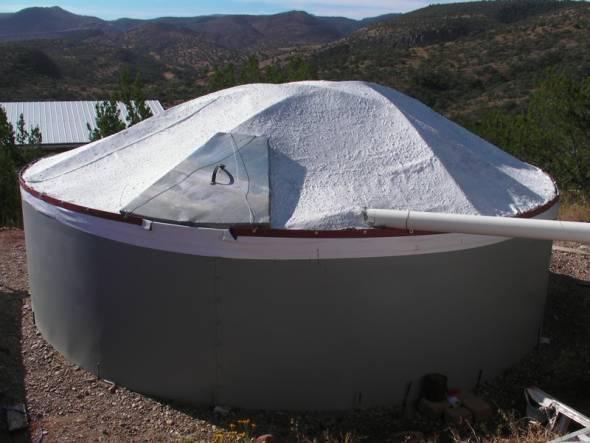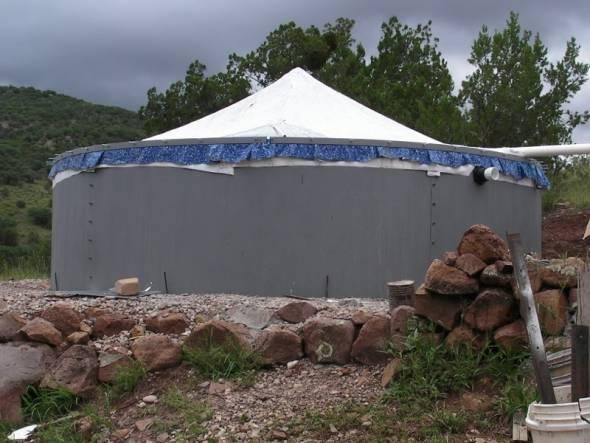
 1
1




 1
1






Subtropical desert (Köppen: BWh)
Elevation: 1090 ft Annual rainfall: 7"
 2
2




 3
3







Buy Our Book! Food Web: Concept - Raising Food the Right Way. Learn make more food with less inputs
Off Grid Homesteading - latest updates and projects from our off grid homestead
 2
2





Buy Our Book! Food Web: Concept - Raising Food the Right Way. Learn make more food with less inputs
Off Grid Homesteading - latest updates and projects from our off grid homestead
 2
2




Buy Our Book! Food Web: Concept - Raising Food the Right Way. Learn make more food with less inputs
Off Grid Homesteading - latest updates and projects from our off grid homestead
 1
1




 All of these look pretty affordable to build too. We live in central Montana, where winters can get to -45 (it sure did this year), so I'll definitely need to winterize the hell out of whatever we end up doing. Plus we intend to plumb a water main into the bottom of the cisterns, join them at a central water line, and have them go into the house for year round plumbing. We're hoping (and fairly sure) that we will end up with some very slanty slopey property so we can gravity pressurize the lines. Trying to use as little energy as possible for the water supply. I'm thinking we may have to bury that tanks pretty far down (like 7 feet) to avoid freezing, and then insulate like crazy. There's a lot of rock around here so we would need to be sure that whatever material we wound up making the cisterns out of could stand some occasional poking and prodding from rocks and such. I'm wondering if maybe we should come up with some kind of a cob-esque thermal mass material to put around the bodies of the cisterns to both protect and insulate them?
All of these look pretty affordable to build too. We live in central Montana, where winters can get to -45 (it sure did this year), so I'll definitely need to winterize the hell out of whatever we end up doing. Plus we intend to plumb a water main into the bottom of the cisterns, join them at a central water line, and have them go into the house for year round plumbing. We're hoping (and fairly sure) that we will end up with some very slanty slopey property so we can gravity pressurize the lines. Trying to use as little energy as possible for the water supply. I'm thinking we may have to bury that tanks pretty far down (like 7 feet) to avoid freezing, and then insulate like crazy. There's a lot of rock around here so we would need to be sure that whatever material we wound up making the cisterns out of could stand some occasional poking and prodding from rocks and such. I'm wondering if maybe we should come up with some kind of a cob-esque thermal mass material to put around the bodies of the cisterns to both protect and insulate them?
 2
2




 2
2




William Bronson wrote: If you intend to bury the tanks, a few layers of used carpet might be all you need to protect the liner. I would be inclined to make the tank long and narrow, to make covering it cheaper.
Most building materials get cheaper(or free) the shorter they are.
Each tank you build is another set of fittings, so one large one could be better, on the other hand that would put all the all eggs in one basket.
Buy Our Book! Food Web: Concept - Raising Food the Right Way. Learn make more food with less inputs
Off Grid Homesteading - latest updates and projects from our off grid homestead
 1
1




 1
1




Subtropical desert (Köppen: BWh)
Elevation: 1090 ft Annual rainfall: 7"
 1
1




 1
1




 2
2




William Bronson wrote: "Round is sound"
I wasn't sure thus would matter much if the tank was basically an in ground pool. Not much chance of the sides collapsing, at least not outwards.
Buy Our Book! Food Web: Concept - Raising Food the Right Way. Learn make more food with less inputs
Off Grid Homesteading - latest updates and projects from our off grid homestead
 1
1




 1
1




 1
1




- "TheRainHarvester" on YouTube
 4
4




Support Ant Village Lot Efforts On Narrow Pond
Respect your superiors...if you have any. Mark Twain




- "TheRainHarvester" on YouTube

|
Then YOU must do the pig's work! Read this tiny ad. READ IT!
Rocket Mass Heater Resources Wiki
https://permies.com/w/rmh-resources
|




